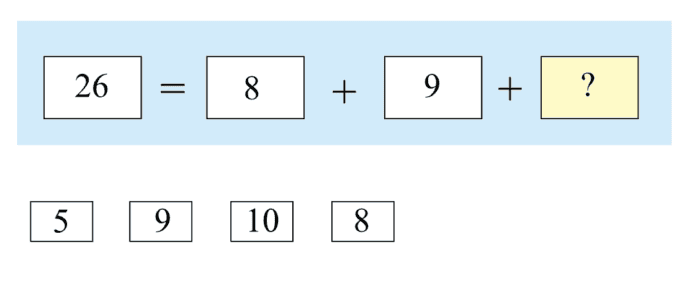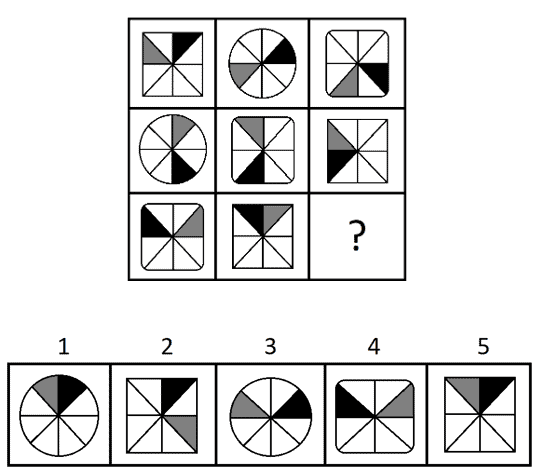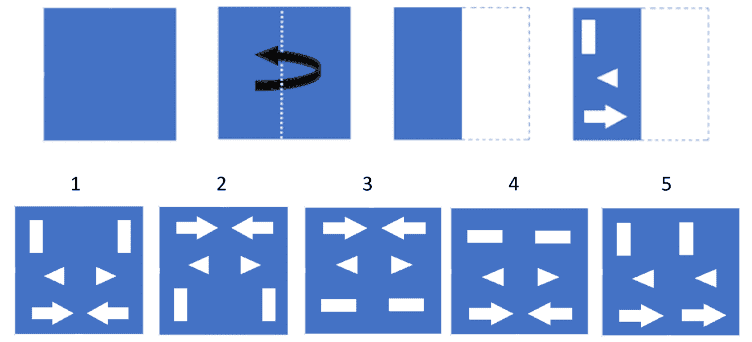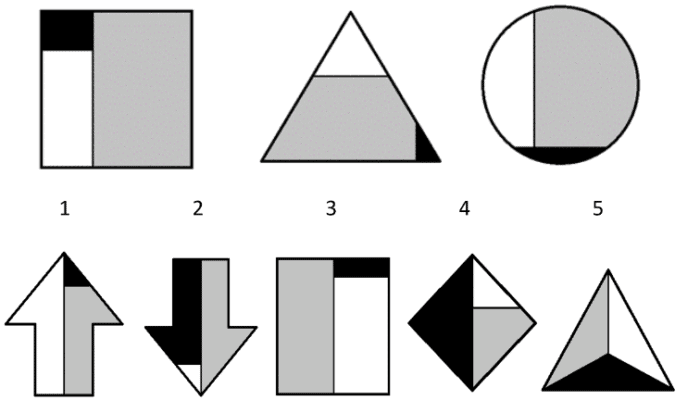The CogAT Test plays a key role in assessing your child’s cognitive abilities, and with the right preparation, you can help them feel confident and ready to succeed.
This guide provides straightforward strategies to support your child’s preparation, making the process simple and effective.
Inside, you’ll find actionable tips to build their skills and confidence, ensuring they perform at their best. As a parent, your guidance is invaluable, and we’re here to make the journey smoother for both of you.
Let’s get started and set your child up for success on the Cognitive Abilities Test.

Hey there! Do you have a question about the test or our practice packages? Email me at roman@staggingapps.website. I'm here to help your child succeed!
In this section, we’ll explain the purpose of this cognitive assessment, its importance in your child’s academic growth, and how it stands apart from traditional IQ tests.
The Cognitive Abilities Exam is a standardized tool designed to evaluate a child’s reasoning skills in three key areas: verbal, quantitative, and non-verbal reasoning.
Unlike achievement tests, which focus on knowledge gained in school, this test assesses how well a child can think critically and solve problems in various scenarios.
Many schools use it to identify students eligible for gifted and talented programs.
This evaluation provides valuable insights into your child’s cognitive strengths and areas where they can grow.
Schools use the results to make informed decisions about placing students in advanced academic programs, ensuring they receive the right level of challenge and support.
It also helps teachers adjust their teaching to fit each child’s needs, giving them a strong foundation for success.
While the CogAT measures cognitive abilities, it is not the same as an IQ test. The main difference lies in their focus and results.
IQ tests provide a single score that reflects overall intellectual ability, often used to assess general intelligence.
This assessment, however, evaluates reasoning skills in three distinct areas: verbal, quantitative, and non-verbal. This detailed breakdown gives a clearer view of how a child processes information across different contexts.
The multi-dimensional insights help parents and educators create learning strategies that align with a child’s unique strengths and areas for growth.
We dive deeper into the comparison between the CogAT and IQ tests in this dedicated guide.
The Cognitive Abilities Assessment evaluates various aspects of a child’s reasoning skills through structured questions and exercises. Knowing the test structure is crucial to guiding your child’s preparation effectively.
This assessment is divided into three main sections, called “batteries,” each focusing on a specific reasoning skill. Together, these batteries offer a complete picture of your child’s cognitive strengths and areas for improvement.
The table below outlines the number of questions in each battery and its subtests. Scroll down for realistic sample questions from our practice materials to help your child get familiar with these subtests.
Verbal Battery
| Subtest | Level 5/6 | Level 7 | Level 8 | Level 9 | Level 10-18 |
|---|---|---|---|---|---|
| Sentence Completion | 14 | 16 | 18 | 20 | 20 |
| Picture/Verbal Classification | 14 | 16 | 18 | 20 | 20 |
| Picture/Verbal Analogies | 14 | 16 | 18 | 22 | 24 |
Quantitative Battery
| Subtest | Level 5/6 | Level 7 | Level 8 | Level 9 | Level 10-18 |
|---|---|---|---|---|---|
| Number Series | 14 | 16 | 18 | 18 | 18 |
| Number Puzzles | 10 | 12 | 14 | 16 | 16 |
| Number Analogies | 14 | 16 | 18 | 18 | 18 |
Nonverbal Battery
| Subtest | Level 5/6 | Level 7 | Level 8 | Level 9 | Level 10-18 |
|---|---|---|---|---|---|
| Figure Matrices | 14 | 16 | 18 | 20 | 22 |
| Paper Folding | 10 | 12 | 14 | 16 | 16 |
| Figure Classification | 14 | 16 | 18 | 20 | 22 |
The CogAT Verbal Battery evaluates your child’s ability to understand and reason using words and language.
This section is important because verbal reasoning skills are closely tied to reading comprehension and effective communication.
It includes the following three subtests:
Sample Question (3rd Grade – Level 9)
This question provides a pair of words that go together in a certain way and a third word. Choose a word from the answer choices that goes together with the third word in the same way.
expand→ grow : diminish→ ?
A. large
B. increase
C. shrink
D. change
E. small
The correct answer is shrink.
These are synonyms that represent change in size. Expand means to get bigger, and diminish means to get smaller (shrink).
Sample Question (Grade 4 – Level 10)
This question provides a pair of words that go together in a certain way and a third word. Choose a word from the answer choices that goes together with the third word in the same way.
The _______ scientist _______ groundbreaking research that influenced many generations after his passing.
A. lazy .. missed
B. careless .. avoided
C. unknown .. prevented
D. ordinary .. observed
E. brilliant .. conducted
Correct Answer: brilliant .. conducted
Explanation: The sentence describes a scientist who left a lasting impact with their research, so “brilliant .. conducted” fits best. The other options, like “lazy .. missed” or “careless .. avoided,” don’t fit the context of influencing generations with research.
Sample Question (Grade 5 – level 11)
Each question provides three words that are alike in some way. Decide how they are alike, and choose the word that belongs in the same group as the first three words.
spaghetti linguini fettucini
A. Italian
B. meatballs
C. penne
D. sauce
E. Bolognese
The correct answer is penne.
Spaghetti, linguini, fettuccine, and penne are all types of pasta.
The CogAT Quantitative Battery evaluates numerical reasoning and problem-solving skills. It includes the following three subtests:
Sample Question (Grade 3 – level 9)
This question provides two pairs of numbers with a certain mathematical connection and another number that shares that connection with one of the answer choices. Find the missing number for the third pair.
[24 → 2] [60 → 5] [84 → ?]
A. 9
B. 12
C. 16
D. 7
E. 24
The answer is 7.
Look for the pattern in the first series of numbers. We get from 24 to 2 by subtracting 22 or dividing by 12 (the possible pattern is -22 or ÷12).
We get from 60 to 5 by dividing by 12 (÷12) or by subtracting 55 (-55). Since there must be the same pattern in both pairs, it is clear that the correct pattern, in this case, is (÷12).
The next series of numbers should follow the same pattern, meaning that the rule between 84 and ? should be ÷12 as well: 84 ÷ 12 = 7, meaning that the correct answer will be 7.
Sample Question (Grade 2 – level 8)
In this question, you are given an equation with a missing number. You must solve the equation to determine what number is missing.

First,
8+9=17
To find the missing value, subtract 17 from 26,
26-17=9
Hence, the correct answer is 9.
Sample Question (Grade 4 – level 10)
This question provides a series of numbers that have a rule. Use the rule to determine which number will come next in the series.
3 12 19 24 27 ?
A. 30
B. 29
C. 27
D. 25
E. 28
The correct answer is 28.
In this series, the pattern is as follows:
The first number increases by 9, then by 7, then by 5, then by 3, and so on. So, the difference between two numbers decreases by 2 compared to the previous pair.
The pattern is +9, +7, +5, +3, …
The last two numbers in the series are 24 and 27, where 27 is larger than 24 by 3, so the next number in the series should be 3 – 2 = 1 greater than 27, i.e. 28.
27 + 1 = 28
Therefore, 28 is the correct answer.
The CogAT Nonverbal Battery measures reasoning with shapes and spatial relationships.
Sample Question (Grade 6 – level 12)
In each row and/or column, the pictures change in the same way or follow the same rule. Choose an answer that goes in the empty box in the matrix following the same rule.

The correct answer is 1.
In this question, the rules that connect the figures of the first two rows are:
Three different shapes alternate in a row. They are divided into eight sections, where one section is colored black and another is grey. The rest are white.
The black section shifts by one position (1/8 of a rotation) clockwise, while the grey section shifts by one position (1/8 of a rotation) anticlockwise when moving from left to right in a row.
The only option that fits this description is the 1st one.
Therefore, the 1st choice is the correct answer.
Sample Question (Grade 2 – level 8)
This question shows a paper folded several times and then punched with holes. The answer choices contain unfolded papers with punched-in holes. You need to determine which of the answer choices is the final product of the unfolded punched-in paper.

The correct answer is 1.
Sample Question (Grade 3 – level 9)
This question shows three pictures that share a connection or a characteristic. Choose the answer that shares the same connection/characteristic from the answer choices.

All three original figures share the following common features:
All of them are divided into three sections with different areas. The smallest section is black, the middle-sized one is white, and the largest is grey.
The only figure that fits this description is in option 3.
Looking for more practice for your child? Visit the grade-specific practice tests below:
The CogAT Exam is tailored to different age groups and grade levels, ensuring that the difficulty of the questions is appropriate for the student’s developmental stage.
The test levels are named after the age group they target (e.g., Level 9 for nine-year-olds), and each level corresponds to a specific grade in school.
Understanding which level your child will take can help you better prepare them for the types of questions they will encounter.
| CogAT Level | Target Age | Corresponding Grade |
| Level 5/6 | 5 to 6 years | Kindergarten |
| Level 7 | 7 years | 1st Grade |
| Level 8 | 8 years | 2nd Grade |
| Level 9 | 9 years | 3rd Grade |
| Level 10 | 10 years | 4th Grade |
| Level 11 | 11 years | 5th Grade |
| Level 12 | 12 years | 6th Grade |
| Level 13/14 | 13 to 14 years | 7th and 8th Grade |
| Level 15/16 | 15 to 16 years | 9th and 10th Grade |
| Level 17/18 | 17 to 18 years | 11th and 12th Grade |
Standardized testing can be challenging, especially for students experiencing it for the first time. Here’s how to help your child address common difficulties:
Feeling nervous is normal, but stress can impact performance. Help your child stay calm with simple techniques like deep breathing or mindfulness exercises.
Establish a smooth routine with plenty of sleep, a nutritious breakfast, and a relaxed morning. Offer encouraging words to boost their confidence and remind them that their best effort is what truly matters.
Time management is essential during the test. Use timed practice sessions to teach your child how to pace themselves.
Encourage them to answer easier questions first and return to more difficult ones later. Checking the clock periodically can help them stay on track and finish within the time limit.
Even well-prepared students can make mistakes when rushing or overthinking. Remind your child to read each question carefully and trust their instincts.
Stress the importance of following instructions and taking their time to avoid unnecessary errors. These strategies will help your child feel confident and ready to succeed.
Helping your child prepare for this cognitive assessment can greatly boost their confidence and performance. By knowing what to expect and practicing with appropriate materials, they can approach test day feeling ready and capable.
Start by introducing your child to the test format and the types of questions they’ll face. Explain the purpose of the test and what it measures, so they understand its importance.
Keep preparation positive and stress-free, encouraging your child to see the test as a chance to showcase their thinking skills rather than a high-pressure task.
Using practice tests and sample questions is one of the best ways to prepare. These tools familiarize your child with the test’s format, timing, and question types, helping to reduce anxiety and improve their performance.
Practice tests can also highlight areas where your child may need extra support, allowing you to focus their preparation effectively.
This test is designed for students from kindergarten to 12th grade, with levels tailored to each age group. Choosing practice materials that match your child’s grade level ensures they are working on the right skills and difficulty level.
By using grade-specific resources, your child can build the confidence and ability needed for their test.
Your support as a parent is crucial in helping your child feel confident and ready for their cognitive evaluation. With your encouragement, they can approach the test with a positive mindset and perform at their best.
Once the test is complete, take time to talk with your child about their experience and reassure them that their effort is what truly matters.
When the results arrive, review them with their teacher to better understand your child’s academic needs and opportunities. Whether the results indicate areas for improvement or eligibility for a gifted program, use this information to support your child’s growth.
Work closely with their teacher to ensure your child has access to the right resources and challenges, helping them thrive academically and personally.
Understanding the scoring system helps you gain valuable insights into your child’s cognitive abilities. The results include several key scores, each providing a unique perspective on your child’s performance.
Here’s a breakdown of the main score types and what they mean:
| Score Type | Description |
| Raw Score | The total number of correct answers your child achieved. |
| Universal Scale Score (USS) | A standardized score that allows comparison across different test forms and age groups. |
| Standard Age Score (SAS) | A norm-referenced score that shows how your child compares to others of the same age. |
| Percentile Rank (PR) | Indicates the percentage of students your child scored higher than. |
| Stanine (S) | A simplified score that categorizes performance into nine broad levels. |
For a deeper understanding of these scores—what they represent, what is considered a strong score, and the highest possible outcomes—explore our detailed CogAT Scores guide.
The duration depends on the age and level, but the test typically takes 2 to 3 hours to complete, including short breaks between sections.
The test is usually administered once a year, though the frequency may vary depending on school district policies.
If a child needs to retake the test, it is often done the following year or during another scheduled testing period.
Retesting can be beneficial if the initial results don’t reflect the child’s true abilities due to factors like test anxiety or unfamiliarity with the format.
What qualifies as a good score depends on the goal, such as meeting the requirements for a gifted program.
The average Standard Age Score (SAS) is 100, with higher scores indicating stronger cognitive abilities. The highest possible SAS is 160, representing exceptional reasoning skills.
Preparing for the CogAT Test may seem daunting, but with the right strategies and support, your child can face it with confidence and readiness.
Familiarizing them with the test structure, practicing sample questions, and helping them manage test-day stress are essential steps toward success.
Remember, the purpose of the test isn’t just about achieving a high score—it’s about using the insights to support your child’s academic growth. By staying involved and encouraging, you’re empowering your child to reach their full potential.
Good luck on this journey—your child is ready to achieve great things!

Sharpening your child's skills with lifelike practice for gifted tests and school exams.
© 2025 GiftedReady | HTML Sitemap